1985 BMW 318i: Yuppie Magnet
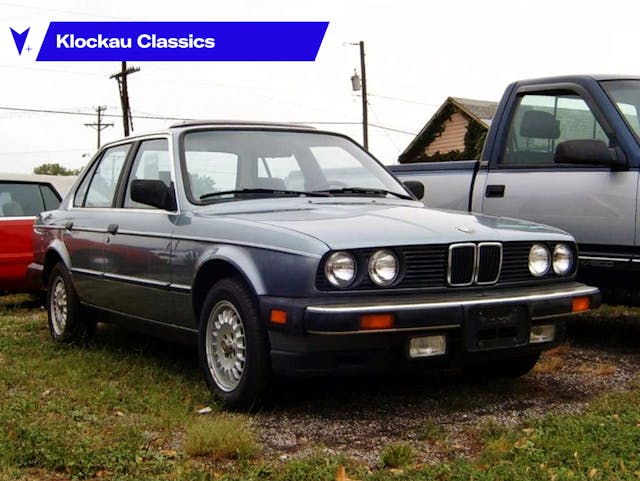
It’s September 1984, and you just made partner at Smith, Johanson, and Olafson, C.P.A. in Minnetonka, Minnesota. You’ve been driving your tried-and-true 1972 318/TorqueFlite equipped Plymouth Valiant sedan for eight years now, and while it’s been a reliable workhorse, those Minnesota winters have been hard on it. Perhaps your new bump in salary means it’s time for a new car. Maybe something more interesting?
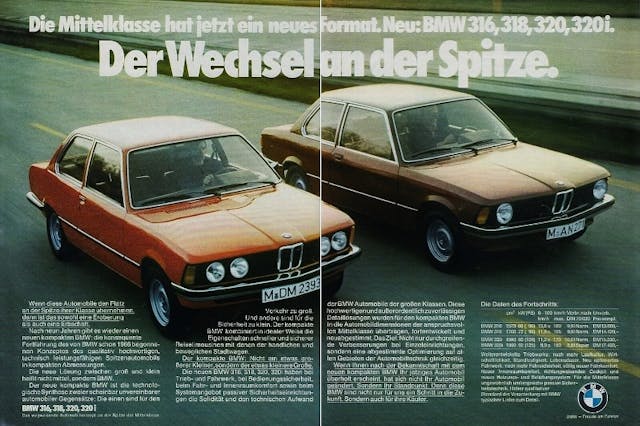
The BMW 318i (designated internally as the E30) replaced the similar-looking E21 3-Series in 1982. Like its E21 and 2002 predecessors, the new E30 offered BMW ownership to folks desiring a well-engineered, tight-handling, small sedan with a dash of Germanic efficiency.
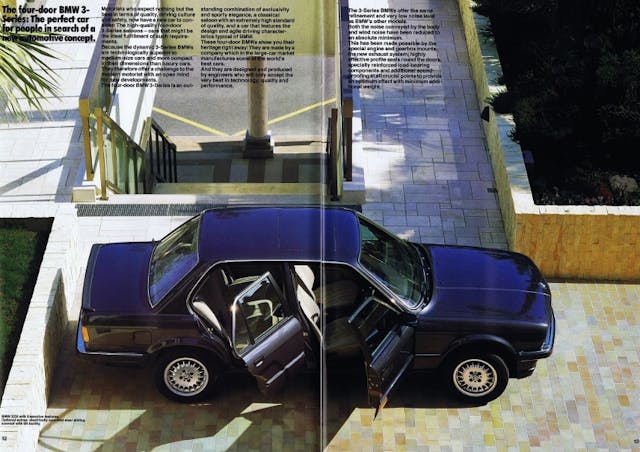
With an overall length of 176.8 inches and a 101.2-inch wheelbase, the 318i was a very competent compact sedan. But not cheap—no one was cross-shopping these against Plymouth Reliants and Ford Tempos! Though rather boxy looking, the 318i was the “it” car for many upwardly mobile adults in the ’80s. Improving on the E21 320i, the 318i (and its 316, 320i, 323i, and 325i siblings sold in other parts of the world) received a new yet familiar look, both inside and out. With the 318i, BMW addressed criticism of the E21’s tendency to oversteer by jiggering the rear trailing arm suspension. It helped, but its tendency to feel a bit light in the rear under certain circumstances was still there to an extent.
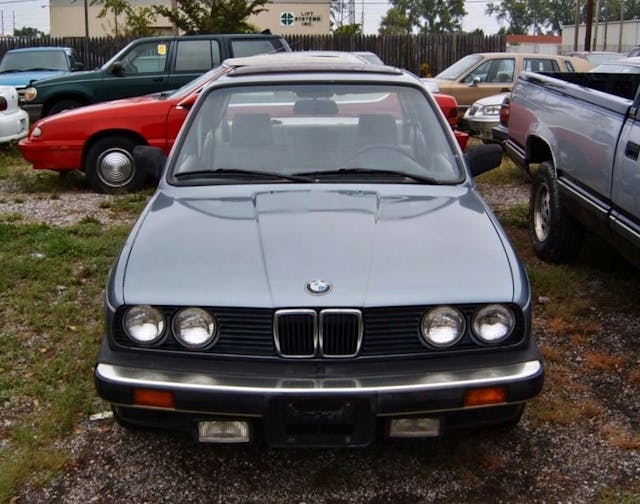
Under the hood resided the “M10” 1766-cc (107.8-cubic-inch) inline four found in the cheaper 316 model, but with an important distinction: it had Bosch L-Jetronic fuel injection. U.S.-bound 318is were good for 101 horsepower at 5800 rpm, and 103 lb-ft of torque. If that doesn’t sound like a whole lot, keep in mind that the little sedan weighed just over 2400 pounds. And if you wanted more power, you were out of luck, at least in the first year (1983). The Ultimate Driving Machine 3 Series topped out with the 318i and 101 hp.

This less-than-satisfactory situation had been going on since 1979, when the new M20 SOHC six appeared in 3 Series everywhere else, in both 2.0- and 2.3-liter versions. The 323i, with 145 hp, was the hot compact car, as enthusiastically embraced and loved as the first VW Golf GTI, which also was withheld from Americans. A BMW truly worthy of its blue-white badge. “But not for you, Amerikaner!”
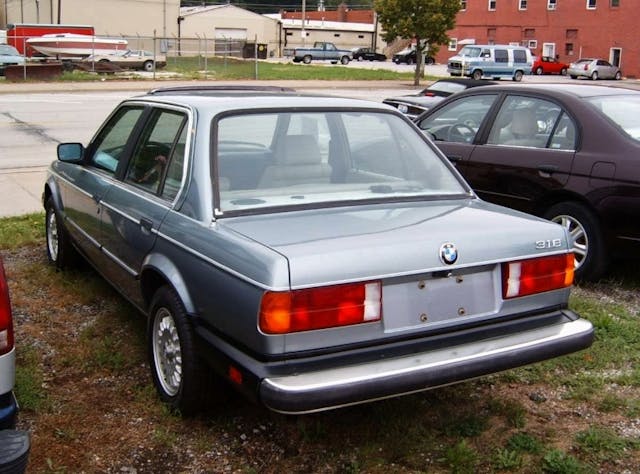
The consolation prize was the 325e, which appeared in 1984, with its low-rev, high-torque 2.7L “eta” engine. It drove like a little Brougham-era V-8. Maybe that’s why they made it for us. But the Ultimate Revving Machine it wasn’t. It wasn’t until the E30’s 1987 refresh that the echter McCoy 2.5L six arrived. Even then it .only came in the top-line 325i/325iS.
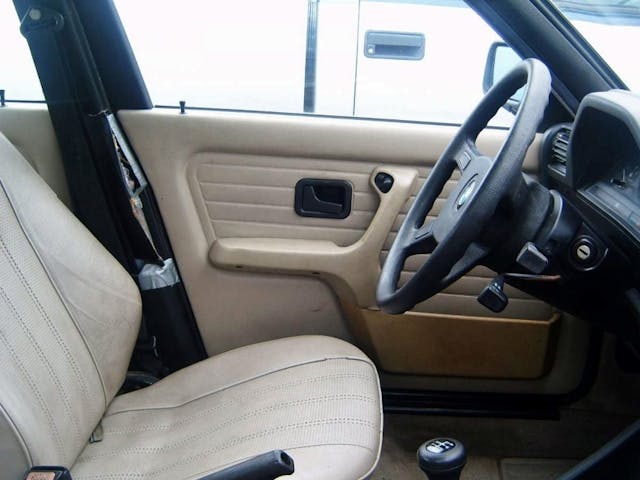
With 168 hp, genuine performance was finally on tap, with a 130-mph top speed and a 0–60 time of some 7.5 seconds. It was a long, cruel wait; BMW’s policies in the eighties were a bit hard to fathom. But since the 3 Series had become the yuppie mobile of first choice, sales didn’t exactly suffer as a consequence.
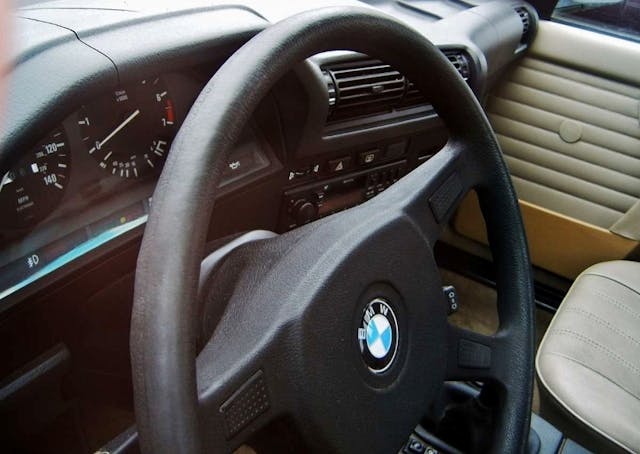
The five-speed manual transmission installed in our featured car was standard equipment, but an automatic was optional for the shiftless. Other factory options included an AM/FM stereo cassette radio, metallic paint, a limited-slip differential, power windows, central locking, leather upholstery, and a manual steel sunroof. The standard interior was perforated leatherette, shown here in Parchment. It seems to have held up just as nicely as Mercedes’ M-B Tex and Pontiac’s ’60s era Morrokide upholstery, both of which are well-known for durability, if not plushness.

Yes, the BMW interior was a model of efficiency. Nary a button-tufted velour seat or simulated plastic burled-walnut dash trim to be found anywhere. As stated in the 1983 318i brochure: “One of the few interiors not left to the whim of a decorator … just as the exterior is uncluttered by fanciful air scoops and the instrument panel is free of mysterious trivialities, there is nothing here that does not contribute meaningfully to performance, safety, and comfort.”
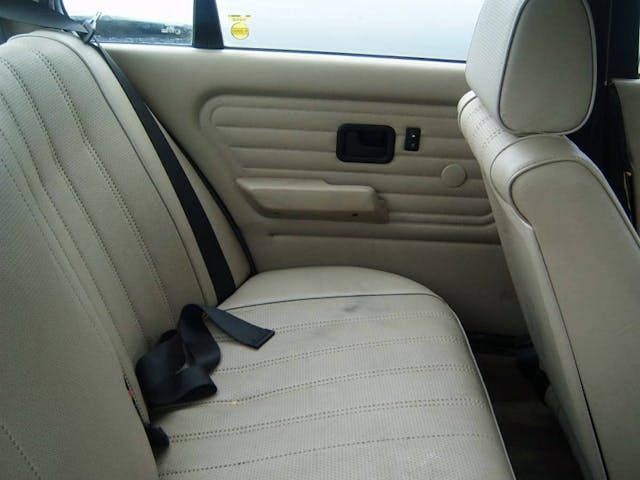
That went for the back seat as well. You have a seat belt, armrest, door handle, and power window switch. The rear legroom looks rather lacking here, but the driver’s seat did appear to be in its rearmost position when I took these pictures. Remember, this is a compact car. Though people were by and large skinnier in the 1980s. BMW made sure to increase legroom in every future version of the 3. Which means that today’s 3 is bigger than the 5 Series was during this time.
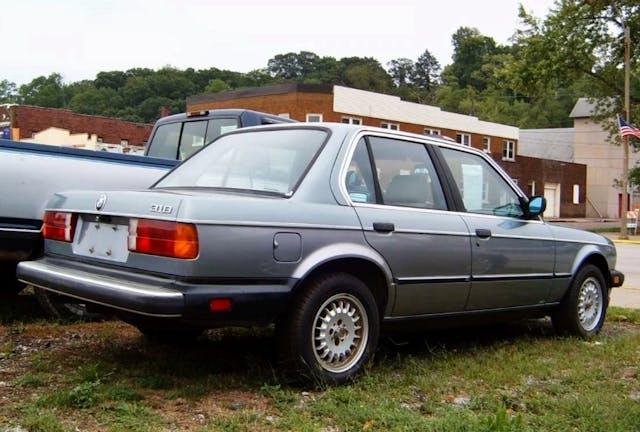
I spotted this 318i in downtown East Moline, Illinois, about 10 years ago. In the Midwest, even then, these were getting rare to see in solid shape, with the possible exception of the convertibles. This one was in fair, complete shape and was for sale at the time. As a 1985 model, it sports the “diving board” front and rear bumpers that were added to North American E30s from 1984–87.
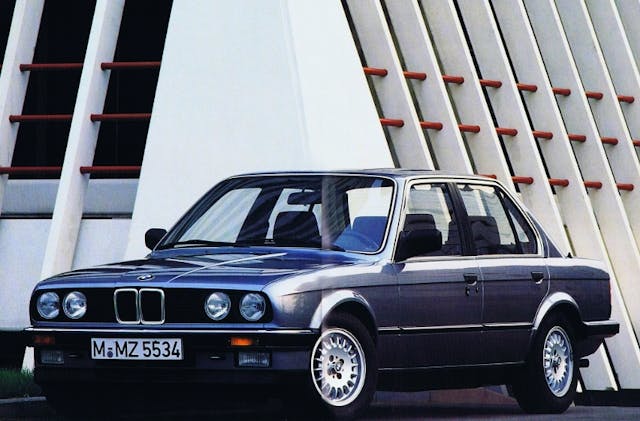
In 1988, the 3-Series got a mild refresh and much better-integrated bumpers.
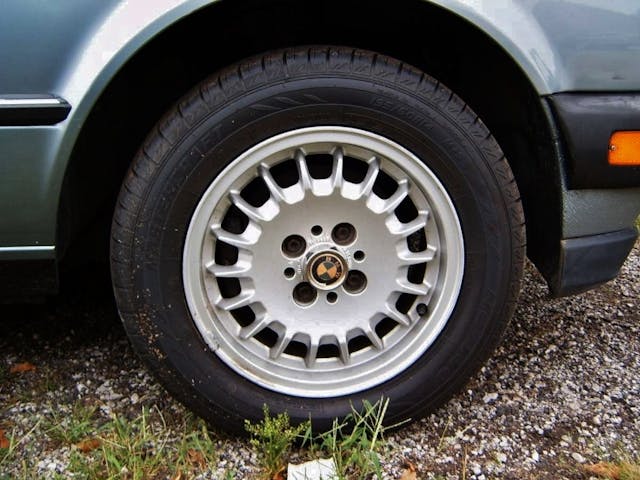
I like these mid-’80s BMWs. I was a kid when they were new, and so there’s the nostalgia part. Plus they remind me of the similarly boxy Volvo 240s and 740s my parents owned back then. They were built with purpose and thoughtfulness. I especially like the clean lines and loads of glass.

Yes, automotive design and engineering departments had different ideas of comfort and luxury in the ’80s: Proximity to Highland Park or Munich apparently was a big factor. Just compare these two! Could any two 1985-model cars look any different? Well, maybe a Dodge Aries woody wagon and a Lamborghini Countach. But I digress.
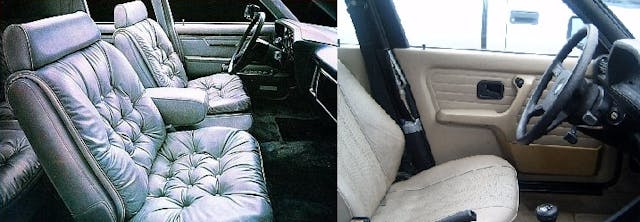
The interiors are also a study in contrasts. One is a leather-upholstered living room with a steering wheel. Lateral support? What’s that? The other one is more of a place of business—and also of fun, should you run across a particularly twisty road. It all comes down to what floats your boat (no pun intended).

So, which car type would you go for? This Balticbleu-metallic, alloy-wheeled driving machine (or similar-vintage 190E), or a cushy and comfy but floaty Fifth Avenue, Fleetwood, or Town Car? Personally, I think both have their merits. No one ever said you had to limit yourself to a single type of car.

